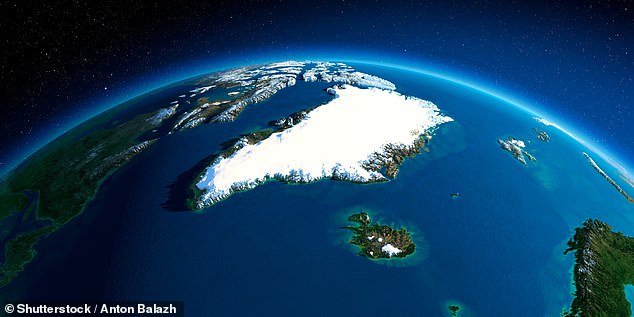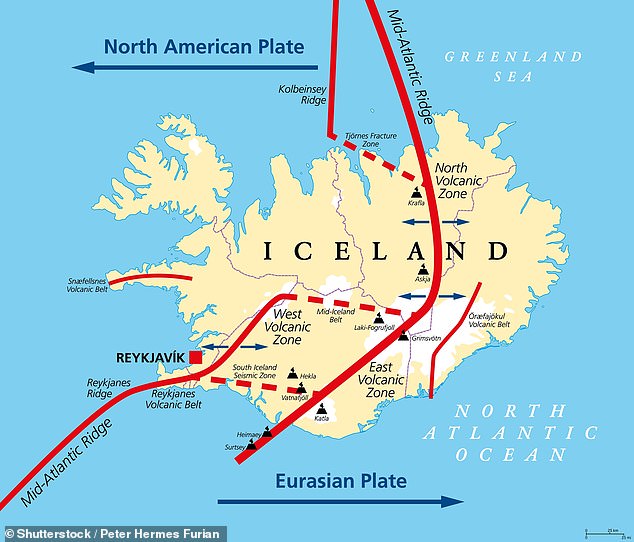-
Experts warn that the separation of the European and North American continents is an ongoing process.
When we were children, many of us were taught that Earth is home to seven continents.
It may be time to revise the geography textbooks, as a contentious study now asserts that there are actually only six continents.
Researchers from the University of Derby assert that the ongoing separation of the European and North American continents is still taking place.
Dr. Jordan Phethean, an author of the study, said: ‘Our findings indicate that the North American and Eurasian tectonic plates have not yet completely separated, as is traditionally believed to have occurred 52 million years ago.
They are, in fact, still expanding and fragmenting exponentially.

The research centred its investigation on the origin of Iceland, situated between the Greenland Sea and the North Atlantic Ocean.
It was generally accepted that Iceland formed approximately 60 million years ago when the mid-Atlantic ridge, marking the boundary between the North American and Eurasian tectonic plates, began to subside, generating a hot mantle plume that developed into a volcanic island.
However, in their most recent investigation, the team opposed this theory.
By examining the movement of tectonic plates in Africa, the researchers now propose that Iceland and the Greenland-Iceland-Faroes Ridge (GIFR) also comprise parts of lost and submerged fragments from both the European and North American continents.
Scientists have recently identified a unique geological formation and are referring to it as the “Rifted Oceanic Magmatic Plateau,” abbreviated as ROMP.
‘I consider this concept as the Earth Science equivalent of discovering the Lost City of Atlantis; fragments of a lost continent submerged beneath the ocean and layers of thin volcanic lava,’ Dr Phethean explained.
‘The study of rifting in the volcanic Afra region of Africa and its comparison to Earth’s behavior in Iceland reveals that these regions are undergoing converging evolutionary processes.’

If the researchers are correct, this implies that the separation of the European and North American continents is still an ongoing process.
For geological purposes, North America and Europe can be considered as part of one single continent.
“While it’s debatable to propose that the GIFR contains a significant amount of continental crust within it, and that the European and North American tectonic plates have likely not yet fully separated, our research indicates this to be true,” Dr. Phethean noted.
The researchers’ conclusions are still preliminary, but next, they intend to study volcanic rocks in Iceland to gather more definitive proof of the existence of ancient continental crust.
They are also conducting research into the plate tectonic movement of the region, and will utilize computer simulations to attempt to construct a model of the ROMP formation.
Considered to have originated around 60 million years ago.
The proto-microcontinent is 400 km long – roughly the same size as England – and is currently situated beneath the Davis Strait, which separates the Labrador Sea in the south from Baffin Bay to the north.
Continental rifting and the formation of new microcontinents are ongoing geological processes.
The discovery of the Davis Strait proto-microcontinent provides valuable insights into the formation of microcontinents, which sheds more light on the operation of plate tectonics on Earth.
This enables scientists to more accurately forecast where valuable resources may be discovered, how the Earth will appear millions of years from now, and how plate tectonics functioned in the Earth’s early history, along with its possibly significant role in the emergence of life.





